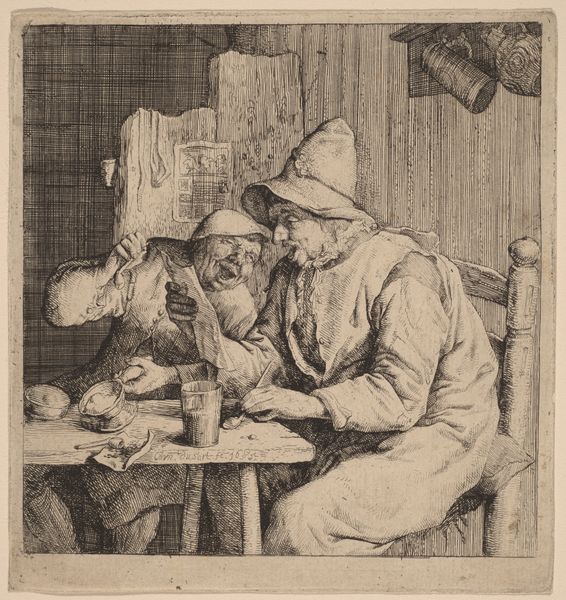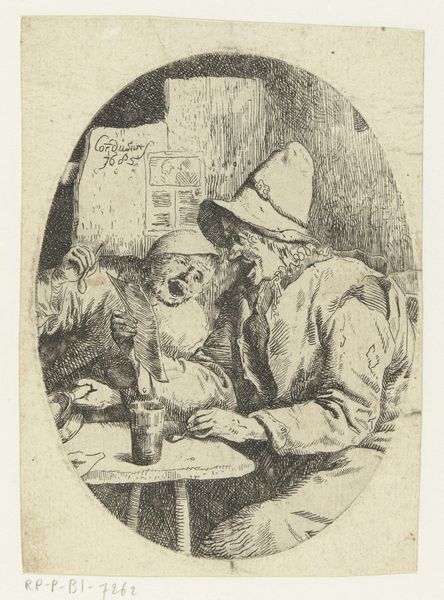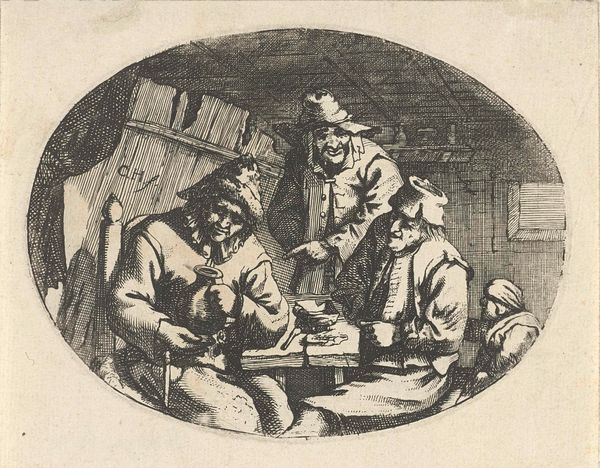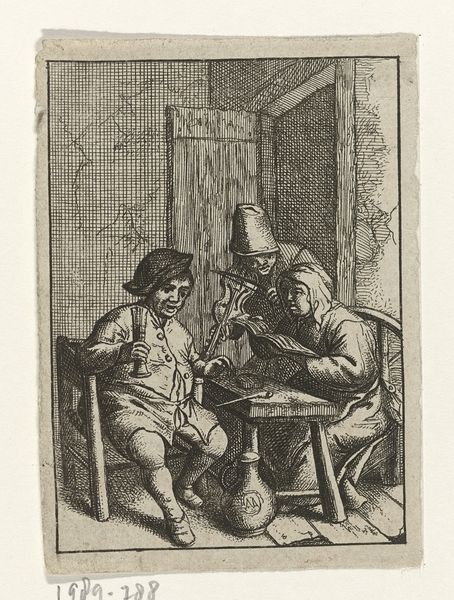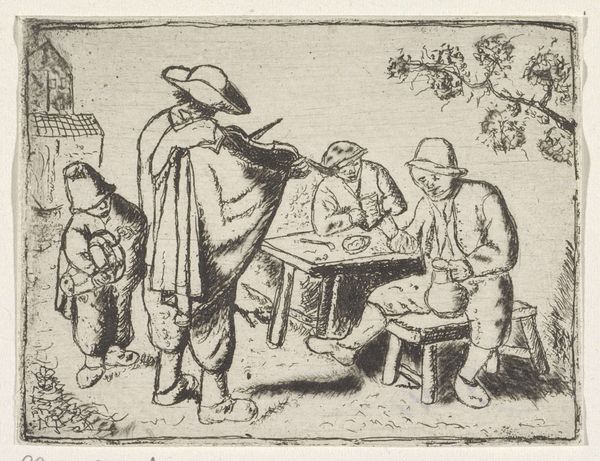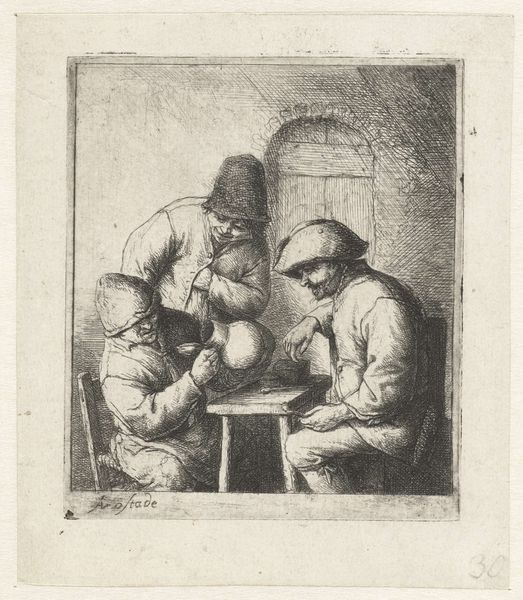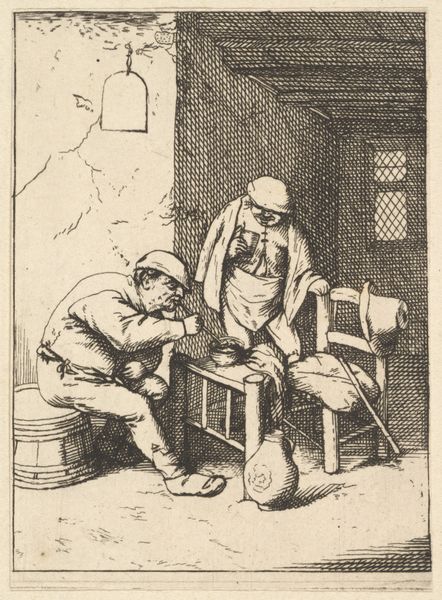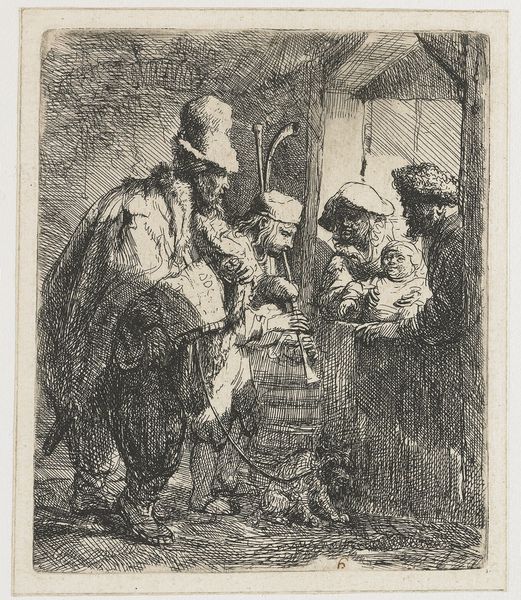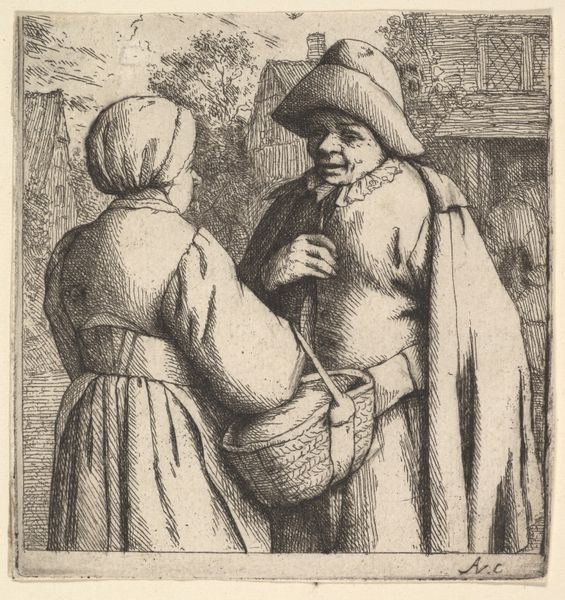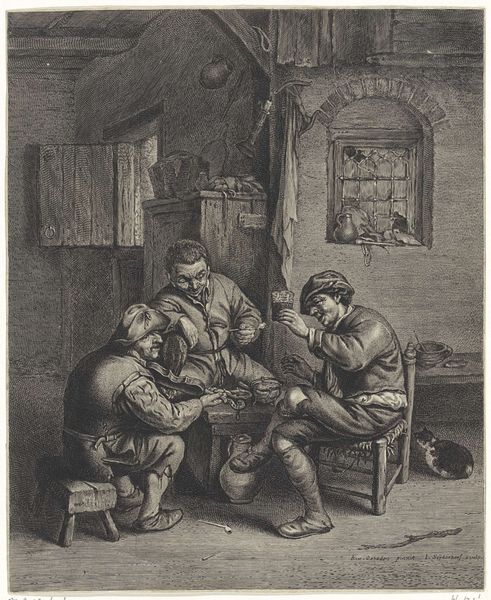
drawing, print, etching
#
drawing
#
dutch-golden-age
# print
#
etching
#
figuration
#
genre-painting
Dimensions: sheet: 3 9/16 x 2 3/8 in. (9 x 6.1 cm)
Copyright: Public Domain
Editor: Here we have Adriaen van Ostade’s etching, “Empty Jug,” dating from the 17th century. It shows three men in what appears to be a tavern setting. I’m immediately struck by the intricacy of the lines, how much detail he achieves with seemingly simple marks. What do you make of this composition? Curator: Formally, observe how Ostade organizes the figures in a tight, almost claustrophobic space. The hatching and cross-hatching generate a remarkable range of tonality, from the bright highlights on the jug to the deep shadows behind the figures. Notice the interplay of textures; the rough wall against the smooth curves of the jug itself. Consider also the orthogonals of the door in the background. Does the contrast of line types give the etching rhythm? Editor: That's an interesting point. I hadn’t thought about the interplay between the textures, but now that you mention it, the rough versus smooth really makes the jug pop. And, yes, I see how the differing lines create rhythm in the piece. So how does that relate to the meaning? Curator: It prompts the question: can we perceive an internal structure, a system of relationships, through which the artist conveys a message? Perhaps the varying light emphasizes the "emptiness," or deficiency. Do we sense a cause and effect within the depicted world? Is the jug a structural pivot point? Editor: So you are saying the empty jug’s form contributes most to our experience, that its formal qualities underscore the work's intent. That's very interesting; it focuses me on the lines and values rather than just seeing three guys in a pub. Thanks! Curator: Indeed. By examining these relationships, we begin to appreciate the artist’s deliberate choices. My pleasure.
Comments
No comments
Be the first to comment and join the conversation on the ultimate creative platform.

